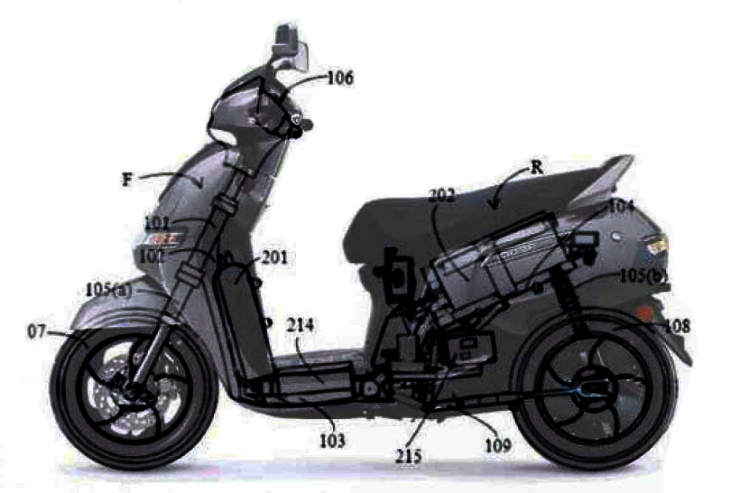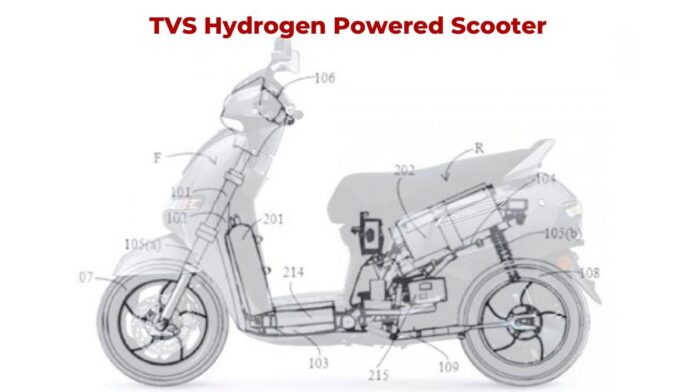Because of the world’s rapidly growing pollution levels, industries are shifting to cleaner and greener ways of transportation. So far, electric transportation is the favoured alternative to fossil fuels. However, several automakers feel that hydrogen-powered vehicles might be a realistic future answer. One of these manufacturers is the Indian multinational motorbike maker TVS Motor Company, which is working on a hydrogen-powered version of its famous electric scooter, the iQube, according to sources.
A few patents containing the name and drawings of the Indian manufacturer appeared online not long ago, and it was surmised from them that they are for a hydrogen-powered scooter. According to the stolen patent docs, the business is developing a scooter with two hydrogen “fuel” canisters fitted to the front downtube of the scooter’s frame. The concept pictures also show a filling nozzle on the front apron and a conduit connecting the two canisters.
About TVS Hydrogen Powered Scooter
The hydrogen fuel stack will be situated behind the seat, where the battery is housed in a standard electric scooter. The patent also states that this scooter will feature a battery pack beneath the floorboard, the size of which has yet to be defined. This battery will store energy generated during braking or deceleration and give additional performance when required. When power consumption is minimised, the fuel cell may also recharge the battery pack. TVS might use a comparable hub-mounted 4.4kW motor as seen on the outgoing electric iQube scooter for the motor.

Read More: TVS Creon Based Electric Scooter Spotted Testing
For those who are unaware, a hydrogen-fueled car operates. It works in the same way as traditional batteries do, with an electrolyte between the cathode and anode. The anode absorbs hydrogen from the environment, while the cathode receives oxygen. As soon as it comes into contact with the anode, a catalyst separates the protons and electrons in hydrogen. To reach the cathode, only protons can swim through the electrolyte. As a result, electrons must travel via the external wire to reach the cathode. They are captured as electricity and transmitted to the controller and motor once there. When hydrogen and oxygen arrive at the cathode with both protons and electrons, they mix to generate water vapor, which is discharged as exhaust gas.
In other hydrogen-powered car news, Triton Electric Vehicle LLC of New Jersey recently disclosed significant news regarding its aspirations for the Indian market. The American EV maker announced plans to enter India with hydrogen-powered two and three-wheeler cars. It further revealed that these hydrogen-powered two and three-wheeler EVs will be produced at its Bhuj facility in Gujarat, where it hopes to start producing EV trucks this year.
Other Concepts
Triton, one of Tesla Inc.’s competitors, is currently the sole manufacturer in the country to have proclaimed its entry into the market for hydrogen-powered two and three-wheelers. According to the company, these Indian-made autos would also be marketed in other foreign markets. Triton has already built its whole R&D Center facility in Gujarat’s Anand district, where it will manufacture two- and three-wheelers, electric trucks, cars, and special-purpose vehicles.
Read More: New TVS Bike Is Coming On July 6 – Apache RTR…
Royal Enfield Electric Motorcycle To Debut By 2025







